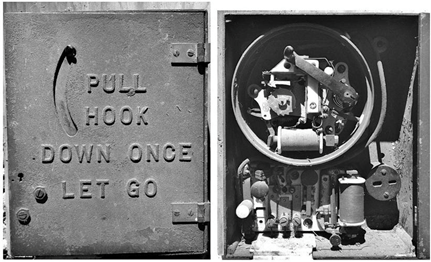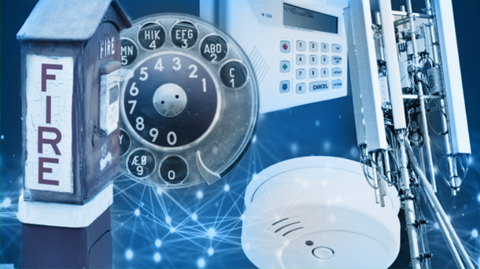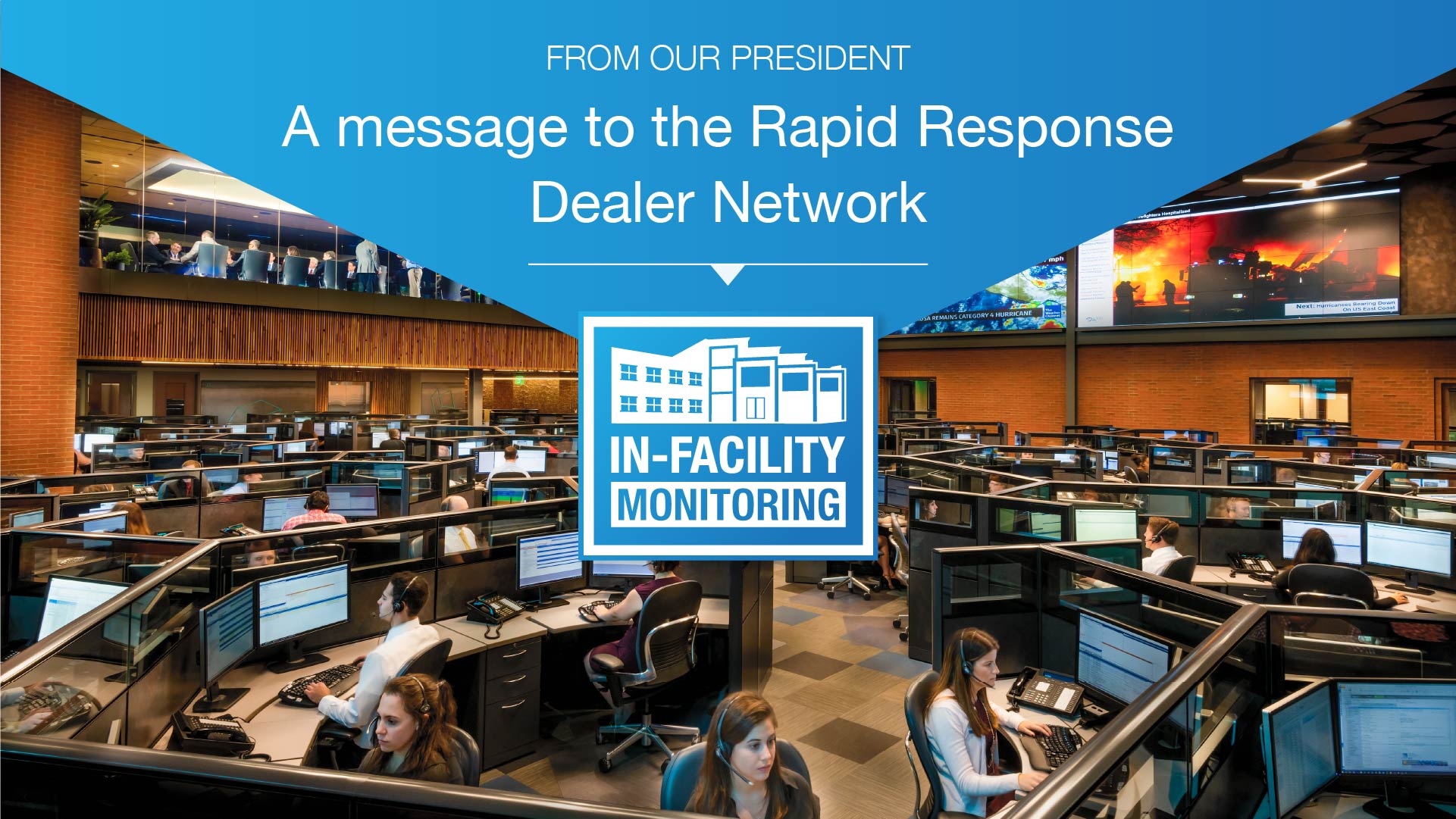In the world of professional monitoring, the evolution of alarm communication methods has played a crucial role in increasing the quality of the service and the safety of end-users, properties, and assets.
In this blog series, we cover the historical progression of alarm signal transmission technology, from alarm circuits to IP and cellular communication. In part 1, we’ll discuss the legacy alarm communication technologies that have laid the foundation of our industry, roughly from 1940s to 1970s.
About the author — Darren Frick is a seasoned Sr. Systems Engineer with an impressive track record spanning over three decades. His career in the industry started at an early age, influenced by his father’s installation company and central station during the early 1980s.
Darren began working as a Monitoring Center Specialist before swiftly ascending to a supervisory role. His interest in innovation led him to explore the realms of receivers and telecommunications, where he now excels at managing transfers for a multitude of independent Dealers and companies that operate their own central station in addition to their installation business.
The Early Stages of Alarm Communication
Before the advent of Public Switched Telephone Network (PSTN), security and fire alarm systems primarily relied on dedicated alarm circuits, central station alarm boxes, or direct wire connections for signal transmission. Here are a few methods that were used:
Dedicated Alarm Circuits
Dedicated alarm circuits involved the installation of dedicated physical circuits between the alarm system at the protected premises and the monitoring station. An actual loop of wire ran the whole way, sometimes with multiple customers sharing space on this loop. These circuits were used exclusively for alarm signal transmission and were often leased from the telecommunications provider or a specialized alarm services company.
Central Station Alarm Boxes
Central station alarm boxes, also known as street fire alarm boxes or pull boxes, were installed at various locations in cities and towns. When an individual discovered a fire or emergency, they could manually activate the alarm box by pulling a lever or turning a crank. Once activated, the alarm box sent a signal through a dedicated wire network to the central station, indicating the location of the emergency.

Direct Wire Connections
In some cases, alarm systems were directly connected to the monitoring station using dedicated wires or private lines. This method involved establishing a direct physical connection between the alarm system and the central station, allowing for immediate signal transmission without relying on a shared network.
As one can imagine, all three were costly solutions, only afforded by governments and wealthy individuals or organizations. It did not take long, as the PSTN gained widespread adoption in the 1950s, for these systems to be replaced, though some remained in operation well into the 1970s.
Major Advancement in the ’60s – The Public Switched Telephone Network
In the United States, the widespread expansion of the PSTN, primarily through Plain Old Telephone Lines (POTS), ushered in a decades-long period of stability and growth for alarm communications. This expansion brought the convenience of connectivity and played a pivotal role in driving costs down, making it more accessible, while increasing the need for protocols to standardize the languages used by machines to communicate over phone lines.
The focus of the advances in protocols centered around how to retain as much information as possible about the nature of the alarm, while delivering it in the shortest amount of time.
Almost any building could open a line of communication to another, so that a person’s home or a business could quickly be in contact with a central station, and in turn the central station could easily contact the relevant authorities, and the responding parties.
The beginning of all this took place before the “computer revolution”, so all throughout the 70’s, ’80s, and 90’s many improvements came about. Competition was healthy, alarm companies and monitoring stations had quite a run and there was room for everyone, it seemed.
Let’s take a look at the progress of PSTN alarm protocols that developed during this time.
The Origin of Pulse Formats
Of course, just placing a phone call to a central station doesn’t automate an alarm system. There needed to be a way to send “data”. Fortunately, there was a way to do this which already existed. Depending on your age, you may recall old phones with a rotary dialer. The sound of a series of regular clicks sent at regular intervals could be interpreted by other machines as digits 0-15 (phones only had 0-9, but the protocol allowed for up to 15). The customer would then be able to relay data to the central station using only a few digits for the account number and the type of alarm.
In fact, the very earliest alarm panels used pulse format and mechanical spinning components, just like rotary phones, to generate the “clicks” or “pulses”. This was soon improved upon, and a whole suite of pulse formats became available:
Originally only a few digits were needed to give each customer a unique account number and a 1-digit code to indicate what kind of alarm was happening. So, we began with formats known as “3×1” (3-digit account number x 1-digit even code), and then “4×1” as the need for longer account numbers arose.
Soon, another digit was added to the code, which both increased the total number of codes, and allowed classification of codes. Now there could be a code 11 for fire zone 1, and code 31 to restore zone 1, and code 81 for low battery, and 51 for system trouble, etc. However, these were still slow methods. Speed was about 1 digit per second.
But there had to be a way to ensure that the digits were not being garbled on the phone call, so a message would be sent twice and compared at the receiving end to ensure they matched, known as “double-round”.
Another method of ensuring accuracy was to include a final digit, which after adding up the whole string of digits should equal that last digit. This was called “parity” or “checksum”. If the checksum was correct, the signal was valid. This was faster because only 1 additional digit was needed instead of the whole 6 digits of a 4×2 signal.
As electronics got cheaper, alarm panel and receiver makers started to work out ways to send information faster and more reliably, so additional formats were developed:
- Pulses were changed to beeps. These sounded more distinct and could be pushed even closer together.
- “Fast” pulse formats of 10, 20, and 40 pulse-per-second (PPS). These still included double-rounds or checksum error checking.
- 10 PPS was the standard pulse – same speed as a rotary phone. 1 digit per second, roughly.
- 20 PPS was faster, as it sent the same pulses but closer together. 2 digits per second.
- Some makers came up with different tone frequencies and even 2 different tones alternating to form the digits. This opened up wider use of Alpha characters, which meant more information could be packed in. These makers also added their own standards for classification of codes, for Openings, Closings, Troubles, Restores, Tests, etc. As a result, new formats arose:
- Radionics fast / slow
- FSK – Frequency-Shift Keying (alternating 2 tones)
- Ademco fast / slow
| 4/2 Pulse Dialing Format Capability | |||
|---|---|---|---|
| Name | Format Type | Handshake Frequency | Speed |
| Ademco Slow | 4/2 | 1400Hz or 2300Hz | 10pps |
| Ademco Slow | 4/2 checksum | 1400Hz or 2300Hz | 10pps |
| Radionics Slow | 4/2 | 2300Hz | 10pps |
| Radionics Slow | 4/2 checksum | 2300Hz | 10pps |
| Silent Knight Fast | 4/2 | 1400Hz or 2300Hz | 20pps |
| Silent Knight Fast | 4/2 checksum | 1400Hz or 2300Hz | 20pps |
| Radionics Fast | 4/2 | 2300Hz | 40pps |
| Universal High Speed | 4/2 | 2300Hz | 40pps |
| Universal High Speed | 4/2 checksum | 1400Hz or 2300Hz | 40pps |
Professional monitoring, once reserved for governments and wealthy citizens, evolved with the adoption of automation, protocols and new technologies, to be an invaluable service for millions around the world.
In the landscape of alarm communication methods, alarm monitoring has been an essential driving force to safeguard life and property. Over the past decades, alarm communication has changed radically due to technological progress, introducing both opportunities and challenges.
At Rapid Response, while we will continue to provide the most reliability available for PSTN, we’ve fully embraced the latest technologies and always have our eyes on the future, so we and our Dealers are ready for whatever comes next.
Stay tuned for part 2, where we cover the beginnings of automated alarm communication with the adoption of Dual-Tone Multi-Frequency (DTMF), Contact ID and SIA, and part 3 which will cover modern communication methods, including Internet Protocol (IP) communication, cellular communication, and Voice over Internet Protocol (VoIP).






